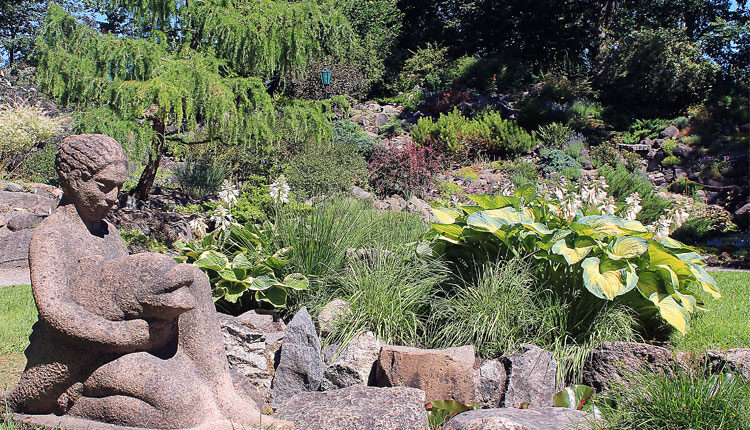
Tartu Botanical Garden
The Tartu Botanical Garden is one of the city’s attractions that deserves special attention. Its greenhouse is the largest in the Baltics, and the garden itself is one of the oldest in the world. The garden’s outdoor exhibition area is a beautifully maintained park, which can be visited for free. However, a ticket is required to enter the greenhouse.
History of the Tartu Botanical Garden
The Tartu University Botanical Garden was founded in 1803 by Gottfried Albert Hermann, who also served as its first director. Originally, the Tartu Botanical Garden was located on Tiigi Street, where the Vanemuine Park is now situated. The garden has been in its current location since 1806.
In 1811, Karl Friedrich von Ledebour became the director of the Tartu Botanical Garden. Under his leadership, the garden reached its current size. The plants in the collection were first labeled between 1868 and 1873 when Moritz Willkomm was the director.
The institution continued to develop over time. However, in 1943, during World War II bombing raids on Tartu, the botanical garden’s greenhouses were destroyed. The then-director of the institution, Theodor Lippmaa, also perished at that time.
In 1944, the restoration of the garden began under the leadership of August Vaga. The construction of a new greenhouse was completed in the 1970s when Hiie Kimmel was in charge of the garden. At the same time, the development of the Tammelinn complex began.
Tartu Botanical Garden Park
A large part of the botanical garden consists of a park divided into climatic sectors. In the “European part” of the park, the thickest maple tree in Estonia, a famous local attraction, grows. The park also features collections of perennial plants.
The Tartu Botanical Garden is a great place for walks. It’s a nice spot to spend time in the summer, relaxing in the shade of the trees. The park is also a beautiful place for photography.
Artificial lakes and bridges across them adorn the Tartu Botanical Garden. In different parts of the garden, there are places to rest – benches and gazebos. Sculptures are also installed in various parts of the garden.
Photo Gallery
Parking
There is no dedicated parking area next to the University of Tartu Botanical Garden. You can park along Lai Street, but this will incur a fee. You’ll find the parking conditions and current prices on-site!
Location on the Map
Other Places of Interest
- Near the Tartu Botanical Garden is the Freedom Bridge. From there, you can walk along the banks of the Emajõgi River and reach the Tartu Town Hall Square.
- One of the city’s most majestic buildings is the Tartu Cathedral. There’s an observation deck on its roof.
- We also recommend visiting the University of Tartu Art Museum. Among other things, you can see an Egyptian mummy here.
